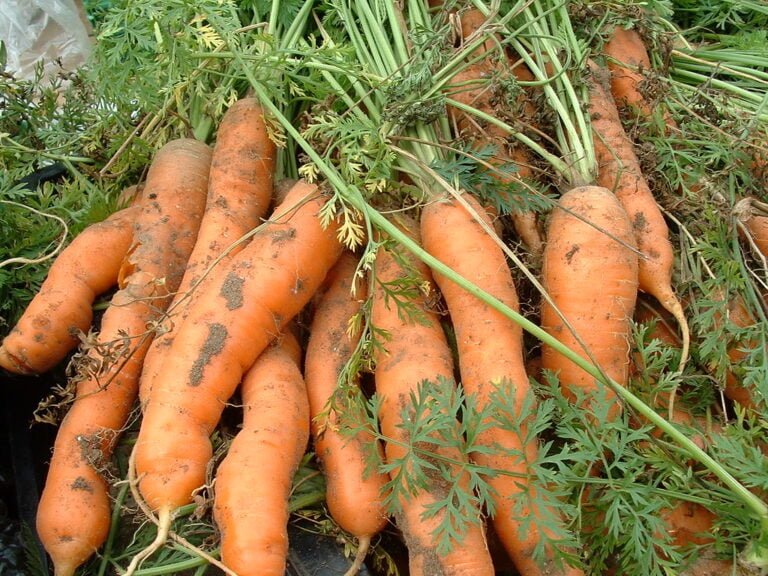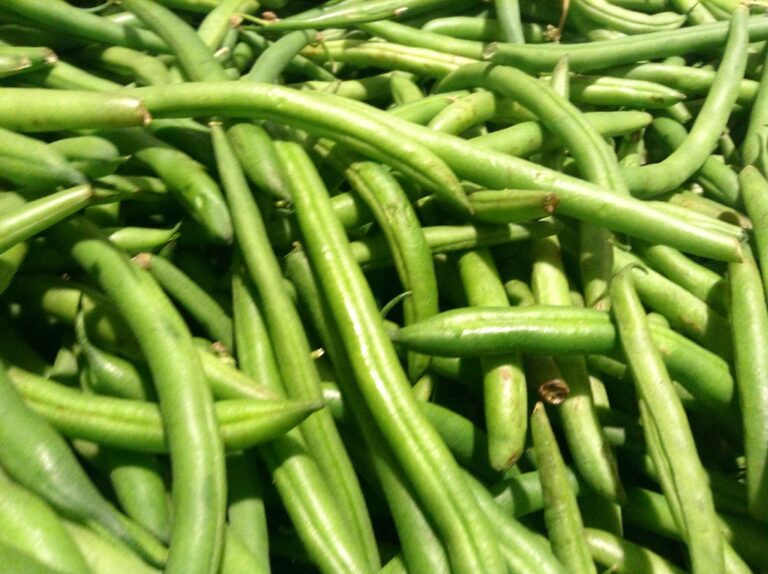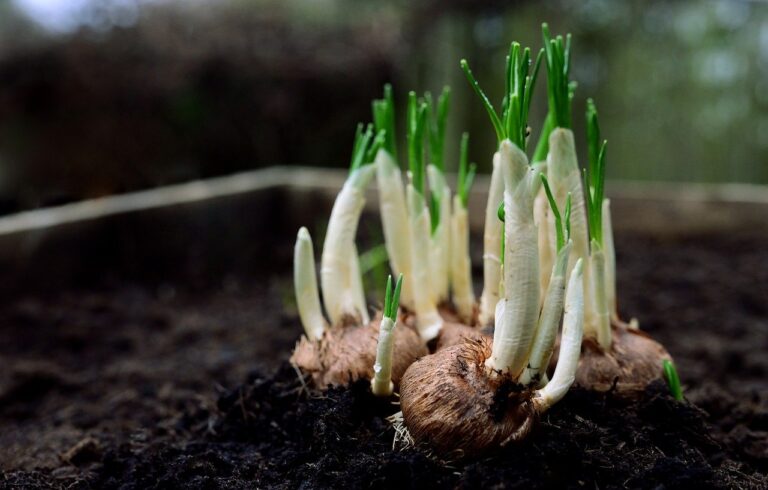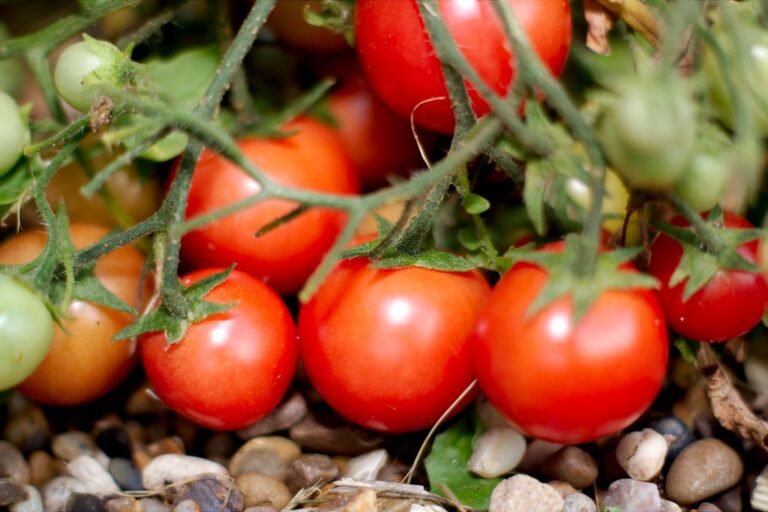Understanding the Right Time to Harvest Cherry Tomatoes
When harvesting cherry tomatoes, keep an eye on their color, firmness, and size. Look for vibrant hues like red, orange, or yellow. The fruit should detach easily from the plant and be around 1 to 1 1/2 inches in size. To avoid overripeness, check for a perfect balance of color, firmness, and flavor. Harvesting in the morning improves sweetness and taste. Remember, storing at room temperature maintains flavor and texture. If you want to savor the best cherry tomatoes, timing is everything.
Factors Affecting Cherry Tomato Harvest Timing
When determining the best timing for harvesting cherry tomatoes, several essential factors play an important role in evaluating their readiness for picking, including color change, firmness, flavor, size, and texture. Cherry tomatoes, known for their small size and sweet flavor, reach peak ripeness when displaying vibrant hues of red, orange, or yellow. The color change is a key indicator that they are ready for harvest.
Importantly, firmness is another critical aspect to take into account when deciding on the best time to pick cherry tomatoes. Typically, ripe cherry tomatoes will have a slight give when gently squeezed, indicating maturity. The texture also plays a role, with ripe fruits having a smooth and taut skin.
Flavor is perhaps the most rewarding factor in determining cherry tomato readiness. Sweet and fruity notes in the taste signify that the tomatoes are at their prime for picking. Monitoring changes in color, texture, and flavor regularly is crucial to ensure the best harvest time.
In addition to color, firmness, and flavor, size can also provide clues about the ripeness of cherry tomatoes. While size alone is not an absolute indicator, a combination of color, firmness, flavor, and texture will guide you in harvesting cherry tomatoes at their peak.
Visual Cues for Harvesting Cherry Tomatoes
One way to visually determine the best time for harvesting cherry tomatoes is by observing their vibrant colors, which serve as a key indicator of readiness for picking. Ripe cherry tomatoes typically display hues of red, orange, or yellow, signifying their best ripeness. When cherry tomatoes are fully ripe, they should detach easily from the plant with a gentle tug, indicating the perfect picking time. Additionally, the size of cherry tomatoes can be a reliable indicator of ripeness, with most varieties reaching a diameter of 1 to 1 1/2 inches when they are ready to be harvested.
It is important to avoid waiting too long to harvest cherry tomatoes, as overripe fruits may split or spoil, leading to a decline in quality. To ensure the best flavor and texture, it is essential to check for color change, firmness, and flavor when determining the ideal time for picking. By paying close attention to these visual cues, you can harvest cherry tomatoes at their peak ripeness, maintaining their quality and maximizing their taste in your culinary creations.
Importance of Avoiding Overripeness
When harvesting cherry tomatoes, it’s vital to differentiate between ripe and overripe fruits. Overripe tomatoes are prone to splitting, affecting their quality and inviting potential decay. To maintain top-notch flavor and texture, it is important to pick cherry tomatoes at their peak ripeness, considering factors like color, firmness, and sweetness.
Ripe Vs Overripe
How can we distinguish between ripe and overripe cherry tomatoes to avoid decreased quality and potential rot? When evaluating cherry tomatoes, checking for the right color, firmness, and flavor is essential. Here are three key indicators to help you determine the best harvest time:
- Color: Ripe cherry tomatoes typically exhibit a vibrant red, yellow, or orange hue, depending on the variety. Overripe ones may appear dull or excessively soft.
- Firmness: Gently squeeze the tomato; it should yield slightly but still feel firm. Overripe tomatoes can be mushy to the touch.
- Flavor: Taste a cherry tomato to make sure it is sweet and flavorful. Overripe fruits may taste overly soft or bland, indicating a decline in quality.
Ideal Harvest Stage
To guarantee the peak quality of cherry tomatoes, it is vital to harvest them at the perfect stage, avoiding overripeness to maintain excellent flavor and freshness. The best time to harvest cherry tomatoes is when they reach full ripeness. Ripe tomatoes exhibit a vibrant color, firm texture, and rich flavor, indicating they are ready for picking. By harvesting at the best stage, you make sure maximum sweetness and prevent fruit rot that can occur if left on the vine too long. Overripe fruit not only loses its taste but can also lead to splitting, affecting its quality. Therefore, paying close attention to the color, firmness, and flavor of the tomatoes is essential for enjoying the best-tasting produce.
Tips for Preventing Cherry Tomato Cracking
I’ll start by highlighting the causes of tomato cracking, including overwatering leading to fruit splitting. Providing consistent watering and avoiding drastic fluctuations can be key strategies to prevent cherry tomato cracking. Maintaining proper soil moisture levels through mulching and harvesting before heavy rain or watering can greatly reduce the risk of fruit cracking.
Causes of Tomato Cracking
Cherry tomato cracking results from fluctuations in water availability, leading to skin split. Factors such as heavy rain or inconsistent watering can contribute to this issue. To prevent cherry tomato cracking, it is crucial to maintain consistent soil moisture levels and avoid overwatering. Additionally, providing mulch around cherry tomato plants can help regulate soil moisture and reduce the risk of cracking. Harvesting cherry tomatoes before heavy rainfall can also minimize the chances of cracking and help maintain the quality of the fruit. By understanding these causes of tomato cracking and implementing preventive measures, you can guarantee a bountiful harvest of delicious cherry tomatoes.
Prevention Methods
Consistent watering practices play an important role in preventing cherry tomato cracking by maintaining ideal soil moisture levels. To minimize cracking, it’s essential to avoid overwatering, as this can lead to the skin splitting. Consistency in watering frequency is vital to keeping soil moisture levels stable, reducing the risk of fluctuations that may cause cracking. Mulching around cherry tomato plants can help regulate soil moisture, creating a more stable environment for the tomatoes. Additionally, harvesting cherry tomatoes before heavy rain can help prevent cracking, as the excess moisture from the rain can increase the chances of skin splitting. By following these prevention methods and ensuring consistent watering practices, you can help protect your cherry tomatoes from cracking.
Importance of Consistent Watering
Maintaining a consistent watering schedule is crucial to preventing cherry tomato cracking, particularly during periods of rapid growth when moisture fluctuations can lead to skin splits. To guarantee ideal growth and minimize cracking issues, consider the following:
- Regular Watering: Provide cherry tomatoes with a consistent supply of water to sustain consistent soil moisture levels and support turgor pressure within the fruit.
- Mulching: Apply mulch around cherry tomato plants to help retain soil moisture, reduce evaporation, and promote even water distribution, preventing sudden fluctuations that can lead to cracking.
- Monitoring Water Needs: Keep a close eye on the moisture requirements of cherry tomatoes, adjusting watering frequency based on weather conditions and the growth stage of the plants.
Best Time of Day to Harvest
During the early morning hours, when the temperature is cooler, cherry tomatoes are best harvested to preserve their peak flavor and texture. Picking cherry tomatoes at this time guarantees that they maintain their best ripeness and sweetness. The coolness of the morning helps in retaining the freshness of the fruits, enhancing their overall quality.
Harvesting cherry tomatoes in the morning also serves to minimize their exposure to heat and sunlight, which can have harmful effects on their flavor and texture. By picking them early, we reduce the risk of damage or dehydration to the tomatoes, hence safeguarding their quality for consumption.
The sweetness of cherry tomatoes is at its peak in the morning, making it the ideal time to harvest for those seeking a flavorful experience. The morning harvest allows us to enjoy the fruits when they are bursting with taste and juiciness, offering a delightful culinary experience.
Storing and Using Harvested Cherry Tomatoes
To preserve the best flavor and texture of harvested cherry tomatoes, it is advisable to store them at room temperature. Here are three essential tips for storing and using harvested cherry tomatoes:
- Avoid refrigerating: Refrigeration can lead to flavor loss in ripe cherry tomatoes. It is best to keep them at room temperature unless they are overripe and need to be saved for a longer period. Storing cherry tomatoes in the fridge can cause a loss of their delicate flavors and alter their texture.
- Speed up the ripening process: If you have green cherry tomatoes that need to mature quickly, place them in a paper bag with a ripe banana or apple. The ethylene gas produced by the ripe fruits will help accelerate the ripening process of the green tomatoes, making them ready to eat sooner.
- Incorporate harvested tomatoes: Harvested cherry tomatoes are versatile ingredients that can be used in various dishes. From fresh salads to flavorful salsas and delicious pasta sauces, there are countless ways to integrate these vibrant tomatoes into your meals. Their sweet and tangy flavor can enhance the taste of many dishes, adding a burst of freshness to your culinary creations.






